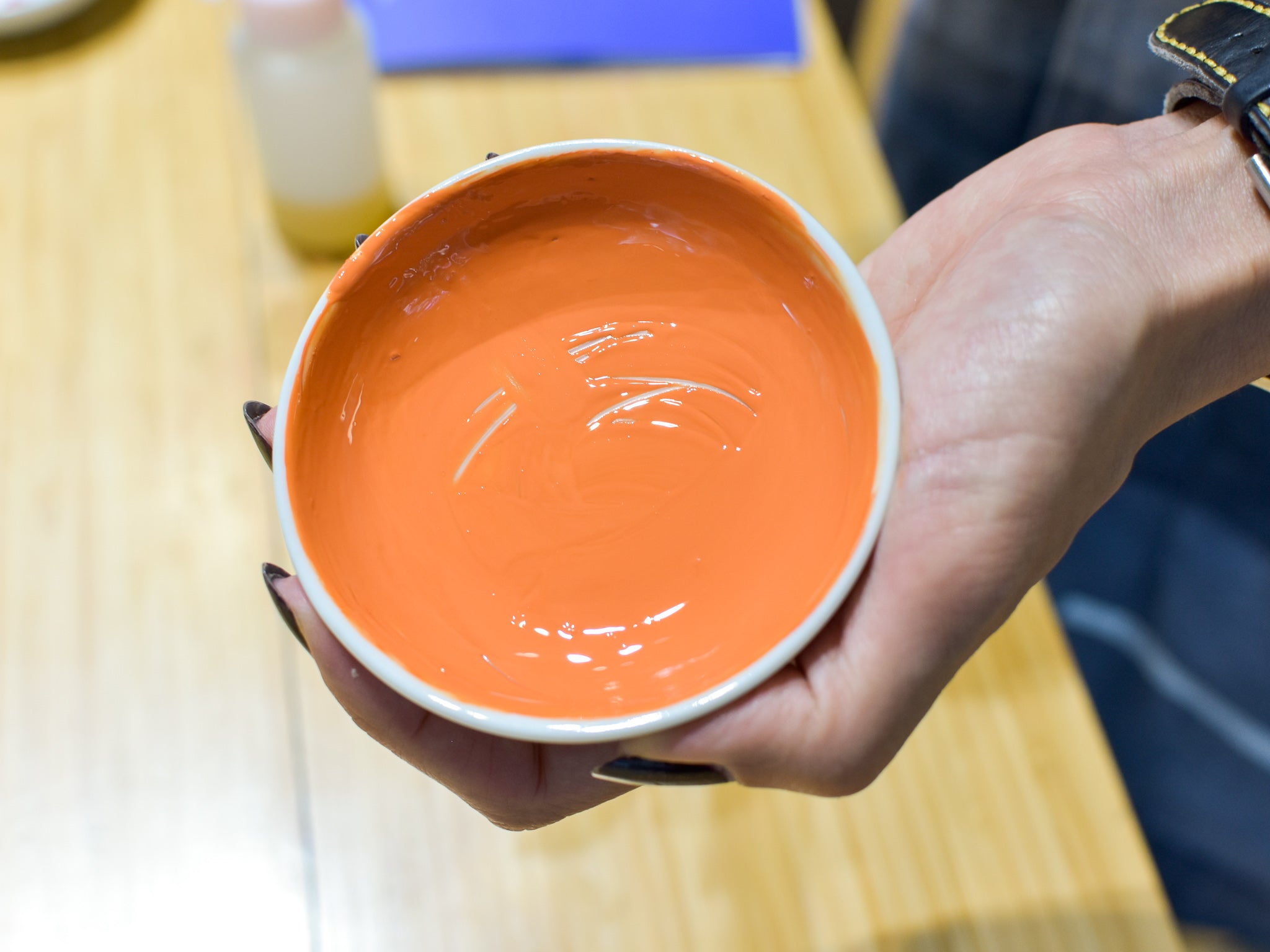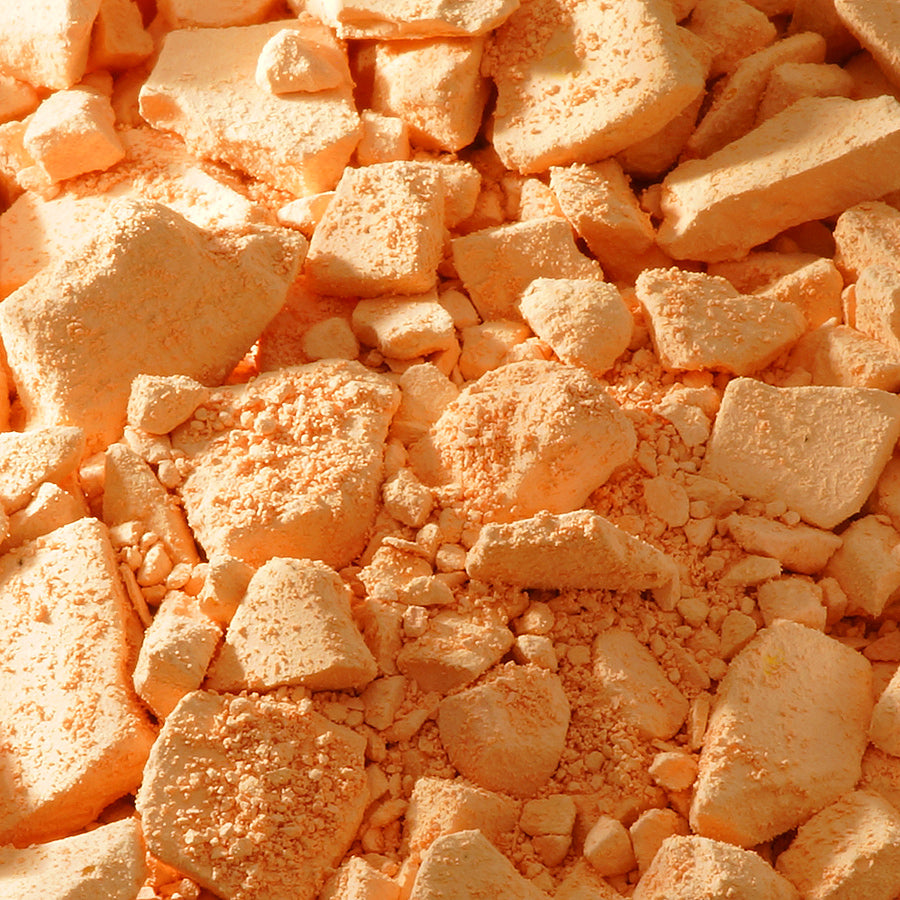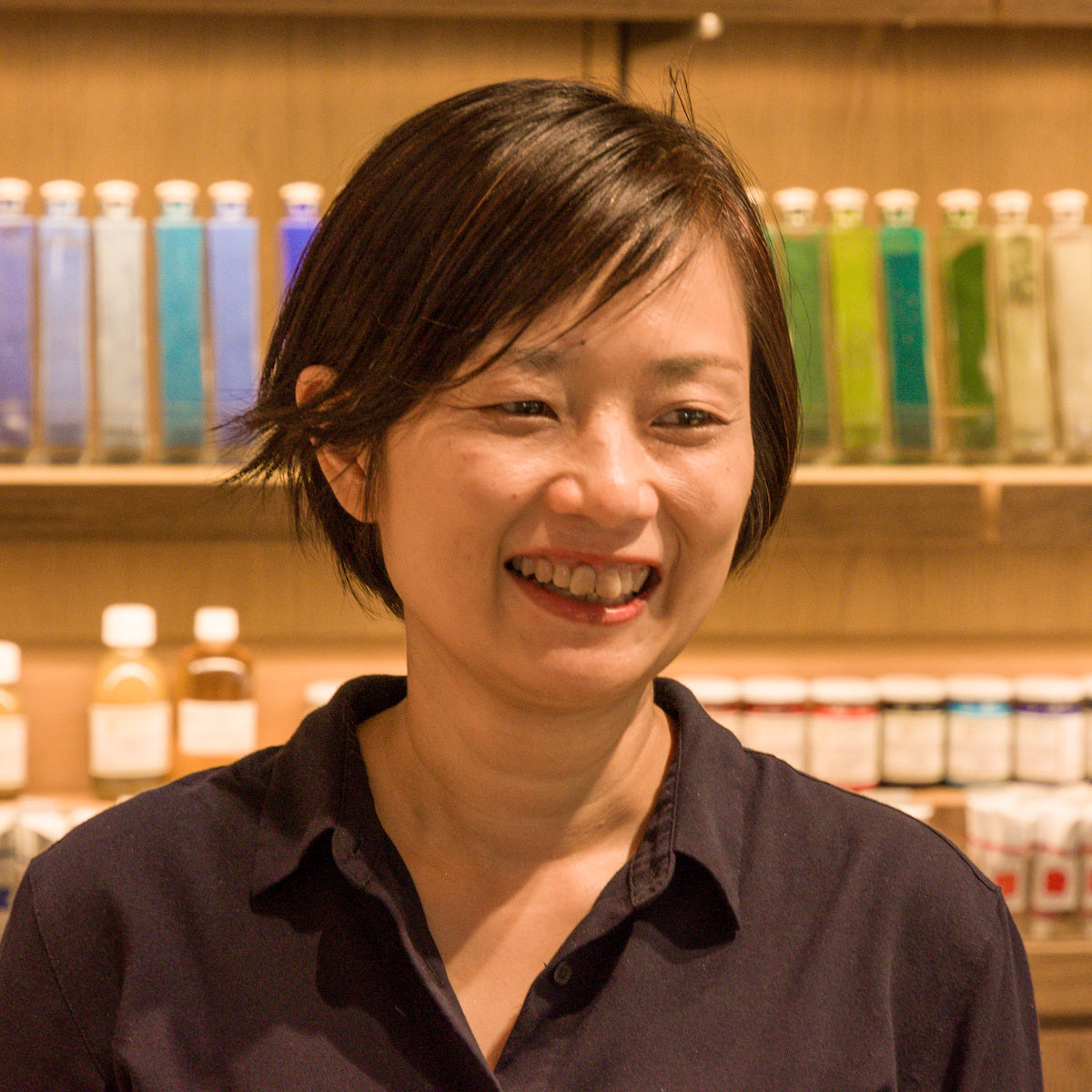At PIGMENT TOKYO, there are many pigments that can be used as "the elements of paint".
One of these pigments is Suihi, which has a greater number of colors and is more affordable than Iwaenogu (mineral pigments), making it easy for even beginners to pick up.
It is better for you to know the characteristics and the use of Suihi, so the process will be simpler and more effective!

To begin with, what kind of pigment is Suihi?
The main ingredient of Suihi is Gofun, a type of painting material made from seashells, and Suihi is by adding colorations into the Gofun.
The origin of the word "Suihi" is “水”(Sui, means water) and “干”(Hi, which means to dry off). Therefore, Suihi means refining the pigments with water and then drying them up.
Another type of Suihi pigment is called Tennen Tsuchi-enogu, which means natural earth pigments. They are quite similar to Suihi pigments, Earth pigments are made by refining soil with water instead of using shells and then drying them.
Let's take a look at what kinds of features Suihi has!

uihi is a “plate-like pigment”, so you have to grind it before using it.
Since the Suihi pigments are relatively fragile, you can grind it by putting the Suihi between two sheets of paper folded in half and rolling a stick over the paper.
However, if you’re grinding a large amount or harder pigments like Indigo, it is better to grind it with a pestle and mortar.
Furthermore, as Suihi does not contain any glue or starch, please add some adhesive medium in the pigments before use.
For those of you who are new to Suihi, please take a look at the instructions below, as well as the tutorial video on Instagram.


Footnote:
3. Adding ox glue into the Suihi pigment.
In this picture, the color I used is called "Sango-iro"(coral pink).

Footnote:
4. The paint became harder as I was kneading it, so I added some glue and
kneaded it again.
By kneading well at this stage, the paint is probably smooth enough to use.
Instagram Live
Suihi・Gofun
https://www.instagram.com/tv/CEn9q3AHX9K/?utm_source=ig_web_copy_linkk
Here are the products I introduced in the article.
Then, what are the effects of using Suihi for painting?

Suihi is a beautiful pigment with excellent color even when used as a single paint, but it can also be used as an undercoat by mixing colors.
We have about 70 colors in PIGMENT TOKYO, and you can create your own colors by mixing and matching them! With all these colors, you can create artworks with various kinds of painting styles!
Here are the results of overlaying and mixing Suihi colors.

Right: [Overlaying] ] From the top: Byakuroku (single light green color), Byakuroku is overlaid with Bi-Gunjo (blue color)
Left: [Color Mixing] From the top: Bi-Gunjo (single blue color), Bi-Gunjo+Byakuroku (applied in different amounts of Bi-Gunjo paint)

Right: Enji (single deep red color)
Middle: [Overlaying] Enji (deep red color) × Kuro-Gunjo (deep blue)
Left: [Color Mixing] Enji+Kuro-Gunjo
When Suihi is used as an undercoat, the top colors look varied depending on the color combination of underlayers, shading, and the way it is applied.
Moreover, feel free to change the color combinations, gradations, paper, or mix with other pigments to present different effects and painting styles according to your own preferences.





